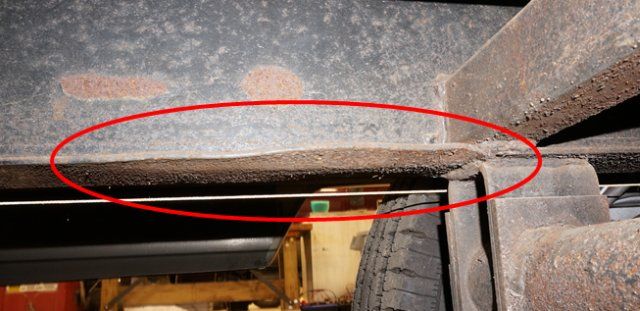Forum Discussion
JBarca
Feb 04, 2017Nomad II
Kayteg1 wrote:
Welcome to the RV World.
Everything is build to minimum standarts unless you can afford bus conversion.
That said, this bend doesn't look like coming from load stress.
More like hitting something or wrongly positioned jack.
I think jacking frame straight and welding plate to close I into square tubing would be the best reinforcement.
Hi Kayteg1,
Thanks for the reply. Yes, I too went down the road of a jacking problem but convinced myself after digging into it, it wasn't a jack stand or lifting issue. I'll show you that below. See if I missed anything.
From what I have researched, the lower flange is pretty much always in compression from the overhung load. The axle hanger area is very rigid. There is the 2 x 2 square tube left to right of the frame and the 2" pipe I added at the hangers to stiffen them up. There is also the 1/4 x 2 flat bar on the outside I added to stop the hanger flex from cracking the I beam web. And the spring is holding up the camper. It's stiff.
There is a small ripple on the outside under the 1/4 x 2 flat bar between the welds. See here.
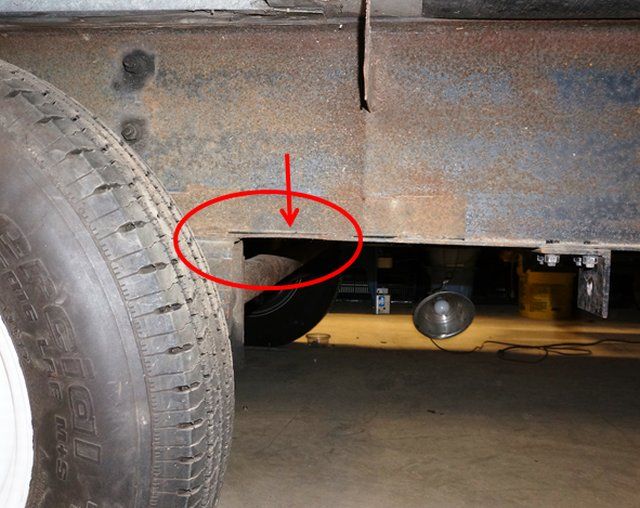
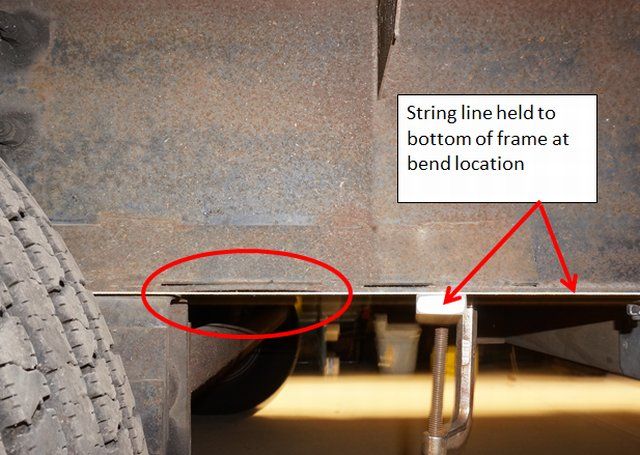
This is my belief, of what happened. See if you agree. That 1/4 x 2 flat bar reinforcement helped the outside flange not bend. But there is still a ripple in it. The inside did not have the added piece and it is believed to take the blunt of the load. When a large dynamic towing load comes from a pot hole, that area behind the rear hanger is the weakest spot. The back of the camper is cantilevered off the axle hanger area. When that heavy bounce goes through the frame, the bottom flange has to resit the buckling loads. If it can't handle that load, it blows out. Bends up or down. Look how heavy the bend is right at the hanger? If the beam is going to fail, that is the mode it would fail in. The top flange is in tension.
This frame failure was a massive one. It buckled the same way. But it also bent a lot more. Bent frame
Now to the jacking. I'm pretty anal about jacking but being open minded I needed to prove to myself the jack stands did not cause this.
See here.
You can see where I put my floor jack, it has 2 large oak boards on top to gain height and I always make sure the jack top plate is dead center on the frame rail.
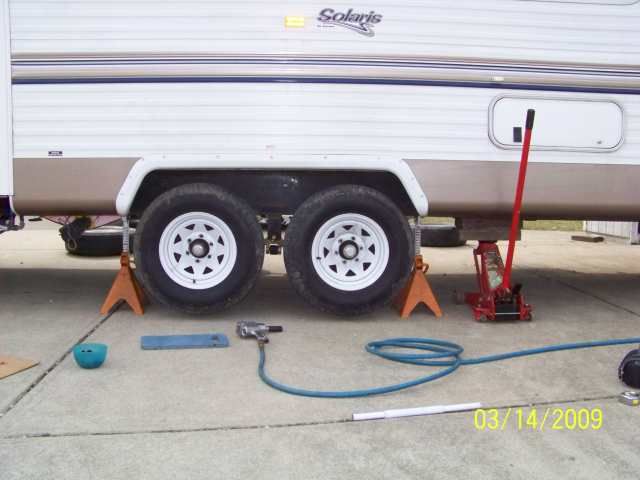
Once the tires are off the ground, I slide the jack stands in and I always use 4 stands. When I let the jack down, the front jack stand “always” touches first, then the back stand as the camper is sagging as the jack is behind the rear axle.
To prove I did not create this with my jack stands, I used my force jack and measured the force to lift the left side of the camper with the tires off the ground. This is not the towing weight as have all food, and freezable things out of the camper for winter but is it close to full weight.
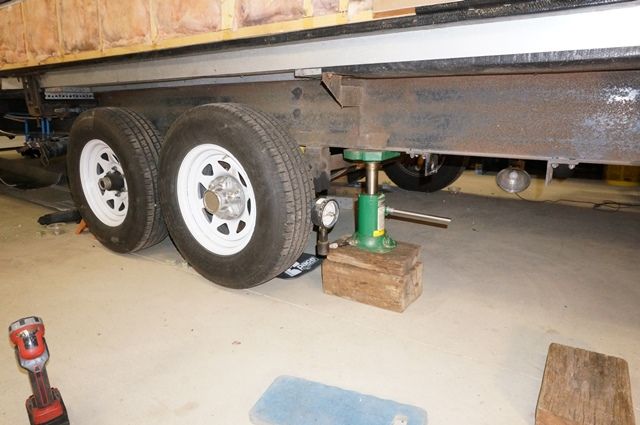
Here is the weight of this side at this jack point, 4,000lb
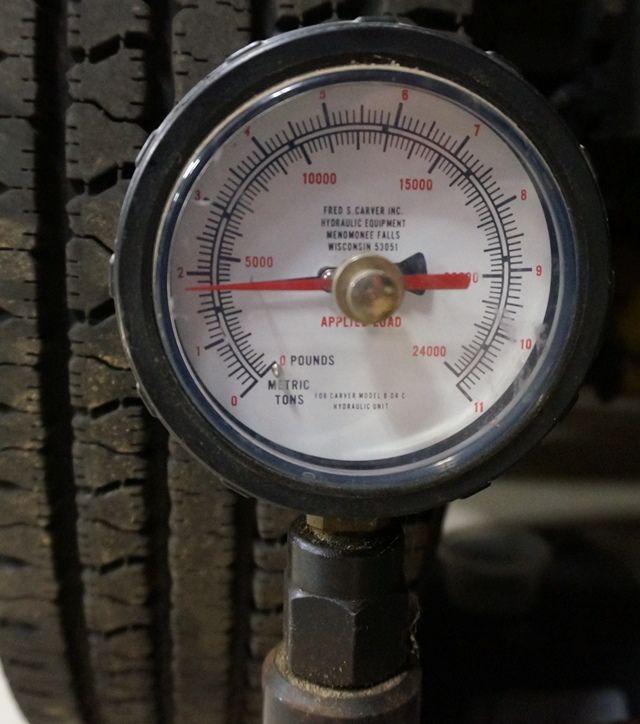
And here is the back side once the front jack stand touches, 2,800lb
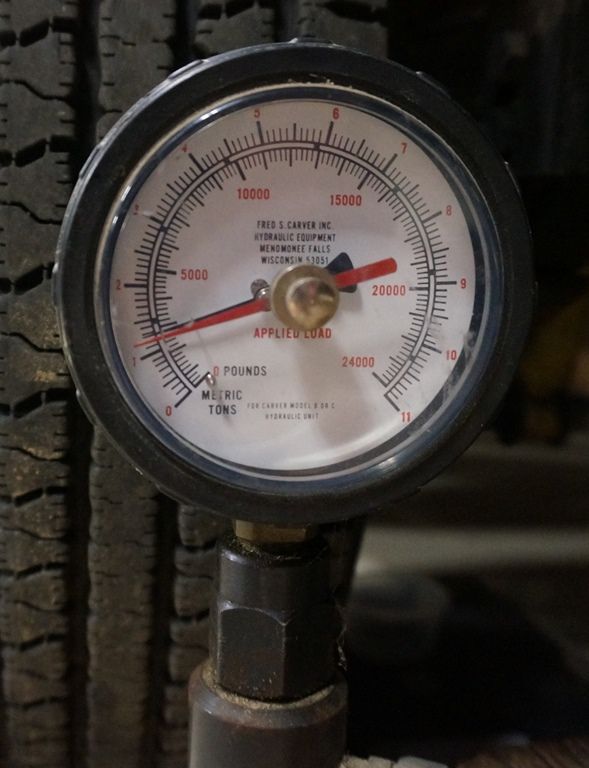
So that rear jack stand was holding 2,800lb. That gave me a force load to start with. I could use that info to do a quick stress calculation on the lower flange to see what league the stress the lower flange might be in from and off center jack stand.
First let’s look at the jack stand and the frame. Hopefully this screen print comes out so you can see it. I have 6 ton and 12 ton jack stands. We are talking about the 6 ton one use with no plate on it. The 12 ton I have to use plates on the stand to bridge the curved depression as the curve is too wide.
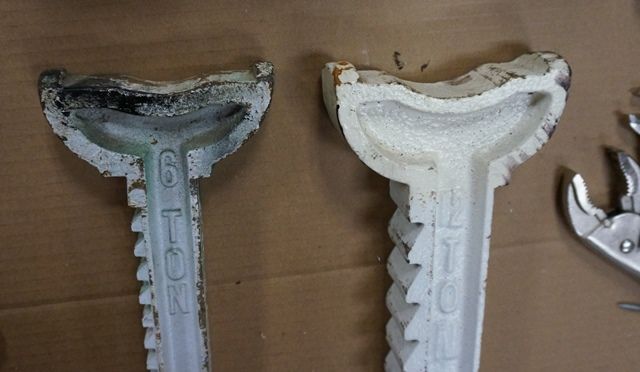
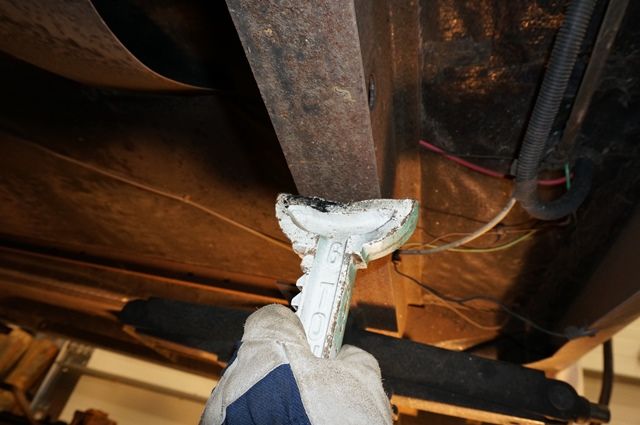
This drawing is to scale of the 6 ton jack stand arm and the frame.
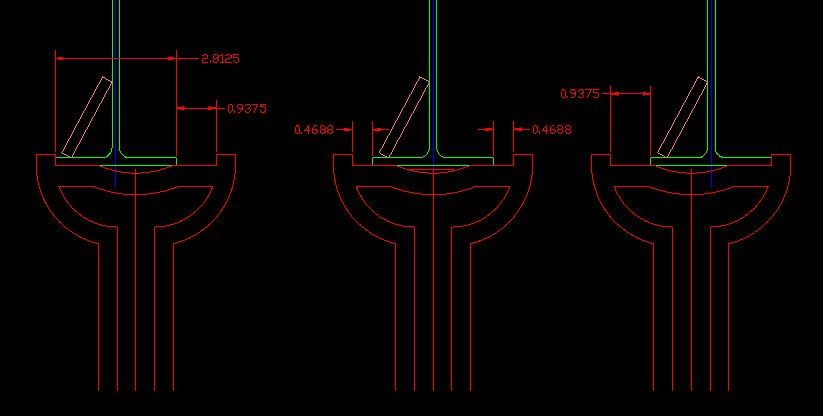
On the left, is the stand arm shifted full right. See the support is under the gusseted area and there is a small amount under the inside flange.
The center image shows the stand centered. Both flanges now have contact.
On the right, the stand arm is shifted all the way to the left. In this case, the inside flange has a lot of support and the outside flange has a very small amount but still in contact.
Since this added 2” gusset was not always on the camper, I did a quick calculation based on that drawing of the far right image where most of the weight is held by the inside flange on the jack stand. Note: The left flange is still touching, just not a lot. The stress is not high enough with a jack stand load of 2,800lb to permanently deform the flange. Granted you do not want to bounce the camper on that right flange but the static load did not show it was enough to permanently bend the flange. Remember, the outside flange still touches a little and is carrying load. I “normally always” center the jack stand on both flanges have load. But even if I mess up, both side of the flange still have load on them.
As a backup, I measured the deflection of the outside flange under the gusseted area while jacking up the camper. This is actual data from jacking up the camper, not calculated. This helps show how much added strength that gusset adds. Basically putting it, that reinforced outside flange can lift and hold the entire 4,000# of the camper and then some.
CAUTION: Do not try this at home….:rolleyes: (seriously, your camper may not handle this)
Here is the test, a dial indicator up high on the frame with the touch point on the outer flange. The force jack is placed on the very outside of the flange on purpose for this test. The most deflection potential location.
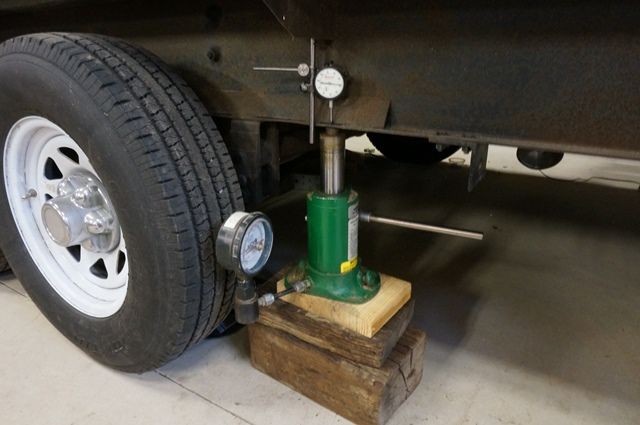

I did this twice with the jack in 2 locations. The first is to put the indicator tip on the flange “between” 2 welds and the jack under the indicator. This allows this short piece of deflect more freely. This deflected 0.028” with a full 4,000lb lift of the camper. Sorry for the out of focus pic. 0.028” is not much and nowhere near the yielding deflection point of this steel.

The next test was to place the jack right under the gusset weld but leave the indicator tip in the same location. This deflected 0.015” with a full 4,000lb lift of the entire camper. Even less.

Point in all this, the way my 6 ton jack stands and camper frame are made combined with the way I use them, it is not causing the frame damage.
To the fix, the frame is bent down 3" as measured at the end of the frame. In order to back flex it enough, I would need to chain down the frame at the hanger and lift the back of the camper above the normal straight level. I might have to go 2 to 3" above. I have concerns about that much flex in the rest of the camper. I can tell I am lifting the camper with the jack at the back wall. The rear tire contact patch to the concrete is almost gone. Thus the need to chain down the axle area. I don't think I can pop it back straight without doing other damage to the upper part of the camper.
Does this help show my point about this being load stress?
Thanks
John
About Technical Issues
Having RV issues? Connect with others who have been in your shoes.24,344 PostsLatest Activity: Dec 26, 2025
